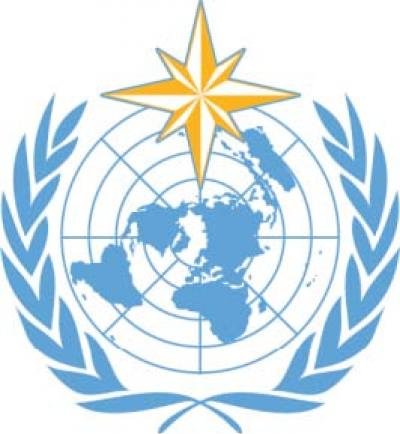| |
Background
Early warning systems have
received significant international attention over the past few years, including (i) three International
Early Warning Conferences hosted by Germany (1998, 2003, 2006)1, (ii) recognition of early warning systems
as an integral part of disaster risk reduction within the G8 Summit (2005) and UN General Assembly Resolutions,
(iii) Report of the Global Survey of Early Warning Systems (2006)2, (iv) First Experts’ Symposium (May 2006)
on Multi-Hazard Early Warning Systems (MHEWS-I), convened by WMO and co-sponsored by six international
agencies. Second International Conference on Early Warnings specified the four operational components of
early warning systems, including :
Observation, detection, monitoring, analysis, forecasting and
development of hazard warning messages ;Assessing potential risks and integrating risk information
into warning messages ;Dissemination of timely and reliable and understandable warning messages to
authorities and public at-risk ;Community-based emergency planning, preparedness and training
programmes focused on eliciting an effective response to warnings to reduce potential impact on lives and
livelihoods.
Based on these components, MHEWS-I identified criteria for “good practices” in early warning systems (EWS),
further discussed major gaps within these components, as revealed by the Global Early Warning Survey, and
identified a number of such good practices in early warning systems.
MHEWS-I further stressed that,
Development and sustainability of EWS would require political commitment and dedicated investments ;
EWS should be an integral part of national and local disaster risk management plans and budgets ;
Enforceable legislation must define explicitly roles and responsibilities of various authorities and
agencies ;Implementation of EWS requires clear concept of operations and standard operating
procedures enabling effective coordination among agencies across the components of EWS, at national and local
levels ;Systematic feedback and evaluation at all levels are needed, to ensure improvements of the
system over time.
Following the MHEWS-I, WMO Congress (XV) and Executive Councils (LVIII, LX)
requested that WMO in collaboration with other key partners initiate EWS projects, particularly demonstrating
National Meteorological and Hydrological Services’ (NMHS) institutional cooperation and coordination with
disaster risk management agencies and other stakeholders. Furthermore, these projects should determine
whether economies and synergies could be achieved through a multi-hazard approach. In this regard,
WMO in collaboration with the NMHS and their national partner ministries and agencies has initiated
multi-hazard EWS projects in China (Shanghai) and France. In addition, WMO is facilitating the documentation
of the Tropical Cyclone Warning System in Cuba and Bangladesh, with specific focus on the role of NMHS in
EWS including, their operational coordination and cooperation with other technical and disaster risk management
agencies at national to local levels.WMO is working with ISDR System partners4 to facilitate national
early warning system projects aimed at strengthening operational coordination and cooperation of the NMHS,
with their national partners such as disaster risk management agencies and the Red Cross and Red Crescent
Societies (RCRC) for meteorological, hydrological and climate-related hazards. These projects would address
requirements of disaster risk management agencies for warnings and information, development of standard
concept of operations and a feedback mechanism for improving the coordination and operations among the NMHS
and their stakeholders. First set of such pilots are being initiated in Central America.
The ability to scale up these capacities would require effective sharing of experiences and lessons learned
and provision of guidelines to support capacity development through training and development projects overtime.
In this regard, WMO is convening the “Second Experts’ Symposium on Multi-Hazard Early Warning Systems with focus on
the Role of National Hydrometeorological Services (MHEWS-II),” to be hosted by Météo-France, in Toulouse, France on
May 5-7, 2008.
Goals and expected outcomes of the 2nd symposium
MHEWS-II will bring
together experts from NMHSs, disaster risk management authorities, RCRCs and other international and regional
agencies, with the goals to :
Review and synthesize lessons learned from documented “good practices” in
EWS, focusing on specific roles of NMHS and how they can best support disaster risk management agencies and
other stakeholders within the EWS operational framework at national to local levels ;Review and provide
expert input into the draft guidelines on the “Role of NMHS in Multi-Hazard Early Warning Systems with Focus on
the Governance, Institutional Coordination and Cooperation,” which would be developed based on the synthesis of
good practices in EWS, and ;Provide recommendations to improve coordination and collaboration among
agencies responsible for different aspects of early warning systems (national to local levels) for
hydro-meteorological and climate-related hazards.
Expected outcomes include :
Detailed
documentation of four “good practices” including, (i) Shanghai Multi-Hazard Emergency Preparedness Programme;
(ii) France “Vigilance” System; (iii) Cuba tropical cyclone early warning system; and (iv) Bangladesh Cyclone
Preparedness Programme, particularly focusing on the role played by their NMHS in supporting various EWS
stakeholders and components ;First Guidelines on the “Role of NMHS in Multi-Hazard Early Warning Systems
with Focus on Institutional Coordination and Cooperation” ;Recommendations on concrete initiatives
that can be undertaken by WMO and its international and regional partners to improve coordination and
collaboration among NMHS and other agencies (national to local levels) to improve early warning systems for
hydro-meteorological and climate-related hazards.
More information about this meeting is available on the web site http://www.wmo.int/pages/prog/drr/events/MHEWS-II/
|

